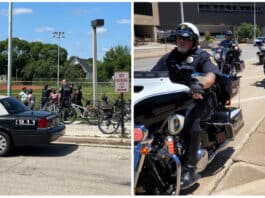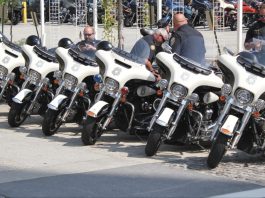The question of “systemic racism” in policing has been brought home in recent weeks by events in Kenosha Wisconsin. The police shooting of Jacob Blake has led everyone from the Governor to the Milwaukee Bucks that policing in this state is fundamentally unfair to African Americans. The basic truth of these statements often goes unquestioned by the news media. But do we have evidence that this is the case?
To answer this question we turn to data collected by the Washington Post. Since 2015, they have built a database on fatal police shootings across the country, including those in Wisconsin. This database includes a wealth of information, including whether the suspect was armed, whether signs of mental illness were displayed by the suspect, and the race of the suspect. The database is widely hailed as more comprehensive than even official statistics (which are included within it.) The table below shows the number of overall police shootings in Wisconsin by year.
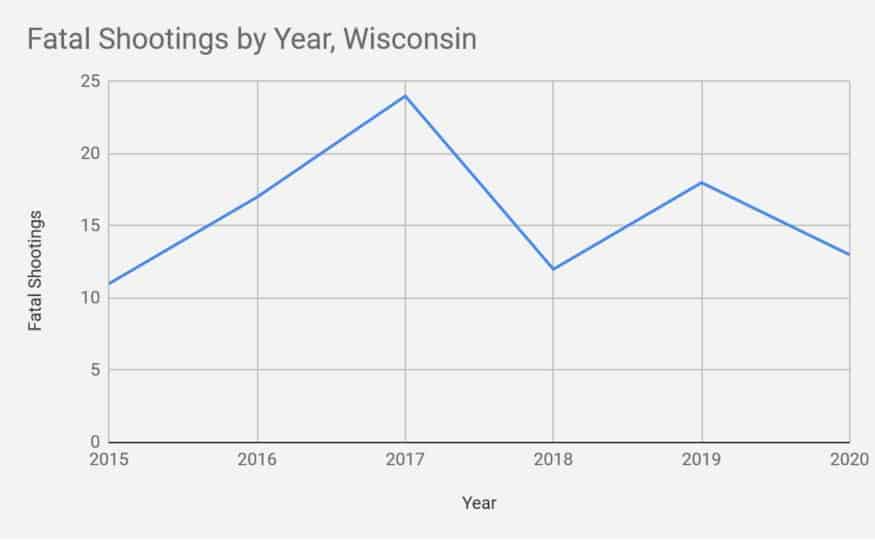
The first thing to note is that fatal shootings are quite rare. 95 fatal shootings have occurred in the state over the past 5 years (though note that 2020 is not yet completed). A high number of fatal shootings was observed in 2017 at 24, before declining slightly in recent years. In this short time frame, however, there doesn’t appear to be much of a trend in the number of shootings. Nationwide, shootings appear to be declining according to recent analyses. While police shootings in the United States are higher than in other countries, so are rates of crime and possession of firearms. But what about the racial breakdown of shooting victims?
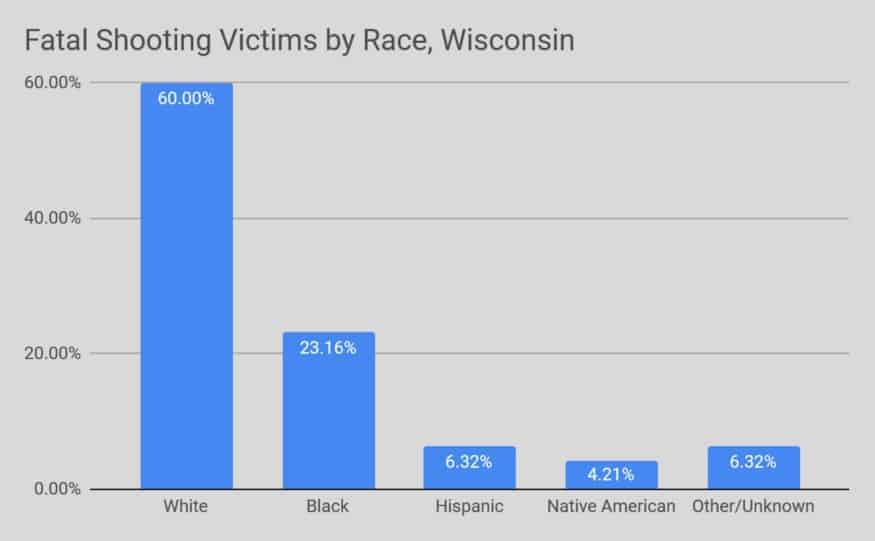
60% of fatal shooting victims in the state over the past five years were classified as white, 23% were African American, and 6% were Hispanic. This is generally where the debate stops — these percentages are compared to the demographics of the state (about 6.7% African American), and the claim is made that we have identified systematic bias.
But the debate ought not stop there. If a particular group has more (or fewer) interactions with police, we would expect variation in the amount of fatal shootings that this group is involved with. To illustrate, Wisconsin police shootings overwhelmingly involve males, yet no one would claim that there is “systemic bias” against men. The Wisconsin Department of Justice provides illuminating data here. Four types of crimes are classified as “violent” by the state — murder, rape, robbery, and aggravated assault. This provides a good proxy for the likelihood of police interaction, and has been used in recent peer-reviewed studies on the subject. In the chart below, we look at the racial breakdown of those arrested for violent crimes in the most recent year available, 2019. We see that 43% of arrests for violent crimes are for African Americans, significantly lower than the percentage of officer involved shooting fatalities for the group.
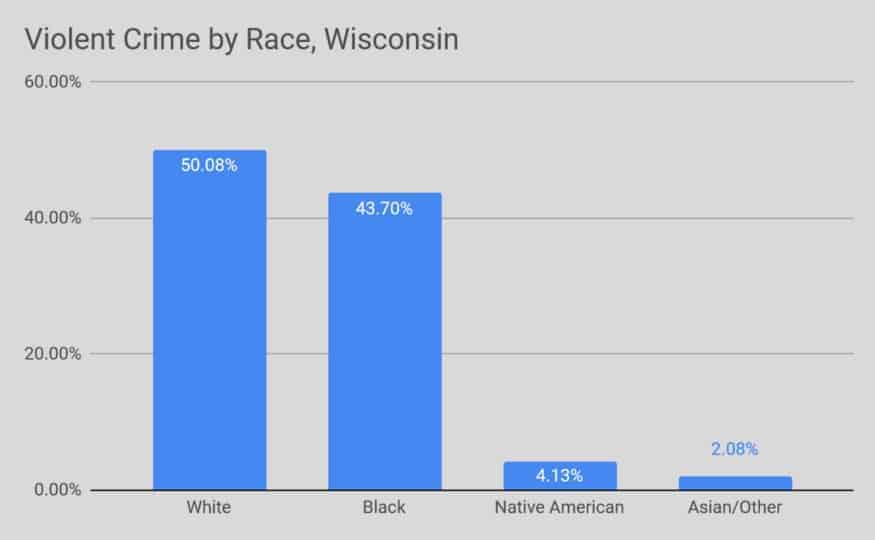
These higher arrest rates among the African American population are consistent with victimization surveys that reveal higher rates of offense among African Americans. We should be clear. Acknowledging a racial disparity in arrest and offense rates does not imply that criminality is caused by race. These phenomena are undoubtedly themselves caused by factors that are correlated with race but are not themselves race. For example, poverty is highly correlated with the commission of crime, and the African American community continues to suffer from the highest levels of poverty of any racial group other than Native Americans. These phenomena may not themselves be entirely free of current or past racial bias. But finding good policy solutions requires the right diagnosis and the bottom line is that there is no evidence that officers in Wisconsin have a predilection for shooting African Americans.
This finding is consistent with much of the recent evidence from national studies. A recent study of police officers in Spokane, Washington found that officers were slower to pull the trigger on African American suspects in a simulation despite evidence of implicit bias against them. A study by a researcher from Harvard found no bias in police shootings towards African Americans. While there are studies that show racial disparities in police misconduct other than the use of lethal force, the oft-repeated narrative that police are ‘hunting down’ African Americans is simply false.
There are absolutely bad and racist cops in the police force. And it is important to note that improper uses of force are serious offenses even if they are not frequent or disproportionately committed against one racial group. Earlier this year, we recommended some policy changes that could help address this problem, including applying Act 10 to the police force. When such individuals engage in bad behavior, they should be punished to the fullest extent possible. But, at least in Wisconsin, there is little evidence of systematic bias against African Americans. It is high time to get beyond the wild claims that are spreading riots and violence across our state and nation and take a sober look at these facts.
Will Flanders, Research Director
Wisconsin Institute For Law & Liberty
Republished with permission






